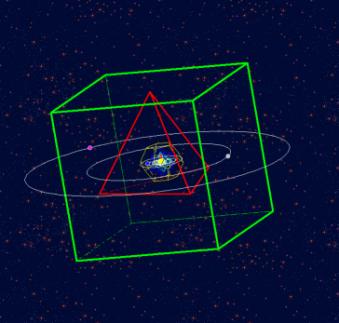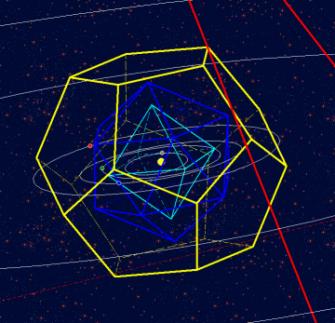The Signature of the Celestial Spheres The Program 2.1
The Signature of the Celestial Spheres invites you to a journey of discovery through our cosmic home and its hidden movement phenomena. The program presents a powerful virtual planetarium with many, for a great part unique, representation and output options based on highly accurate calculations over several millennia in the past and the future.
Your own experimentation will soon show you the functions of the software, but if needed the Help system will provide detailed information. In addition, the menu item Examples can be used to show you pre-defined planetary configurations and sequences through which you can familiarize yourself more closely with the heavenly order and the program and its possibilities.
User-friendly design:
– Easy to operate (by a central operating panel and useful key combinations);
– Easy to learn;
– Many pre-programmed illustrative examples;
– Detailed Help system;
– Glossary of astronomical terms.
Representation options:
– The planetary system in overview;
– Movement figures of 2 or several planets (e.g. the linklines continuously, positions at conjunctions and oppositions, i.e. conjunction stars, and much more);
– Sun and barycentre (centre of gravity of the whole system);
– Moon (e.g. its positions at conjunctions of the planets and other constellations);
– Rotations (and their relationships with the planetary orbits);
– Long-term simulations of the orbits.
Additional options:
– Platonic solids and Keplers stellar solids;
– Keplers Mysterium Cosmographicaum (The Secret of the Universe) of 1597;
– Extensive collection of quotations about the cosmic order and the harmony of the spheres.
Settings and functions:
– Planets and centre (Sun, Earth, other planets) can be freely selected;
– Zoom function;
– Perspective view from all angles (rotation about the 3 spatial axes);
– The velocity of the representation can be regulated;
– Immediate result (e.g. 750 linklines Venus-Earth);
– Rotation of figures (draw only, for example, the last 20 linklines or positions in any one case);
– Zodiac or constellations can be switched on or off;
– Scale and legend (on or off);
– Colours can be selected (background, orbits, etc.);
– Date can be set (including Julian Days).
Calculations and output:
– Calculation of positions, conjunction and opposition dates (e.g. positions of the Moon in the next 100 days, the last 1,000 Mars/Earth conjunctions, etc.);
– Computational accuracy can be set (highly accurate calculation with the VSOP Planetary Theory);
– Precession selectable;
– Data output options (astronomical / astrological position data, time in TDT/UT, distances in AU/km, LLR or XYZ coordinates);
– Print preview;
– Save image;
– Astronomical data (e.g. periods of conjunctions, resonances of the orbital periods);
Additional options in Version 2.1:
– Bilingual German/English;
– 4 asteroids and 8 minor planets can be shown;
– Option Representation without distances (as these are not discernible by looking at the sky) from the Earth-centred view including the Moon;
– Option Loops as seen from Earth (as they actually show in the firmament);
– Extended display options in the representation Barycentre (centre selectable, Sun size can be displayed);
– Option Number of orbit points (enables a smoother simulation of planetary motion);
– The possible period of representation is doubled (max. 100,000 years);
– Extended control options via hot keys.
Many exceptional program options (e.g. the representation of Keplers Mysterium Cosmographicum amid the orbiting planets); enlargement with zoom function on the right .


